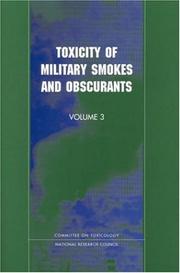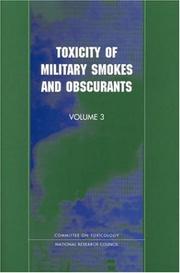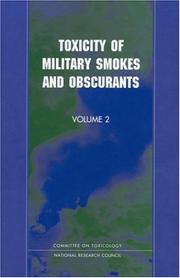| Listing 1 - 10 of 18 | << page >> |
Sort by
|
Periodical
Abstract | Keywords | Export | Availability | Bookmark
 Loading...
Loading...Choose an application
- Reference Manager
- EndNote
- RefWorks (Direct export to RefWorks)
Diesel fuels --- Diesel fuels. --- Business, Economy and Management --- Economics --- Diesel motor --- Diesel oil --- Fuel --- Motor fuels
Book
ISBN: 162618867X 9781626188679 9781626188662 1626188661 Year: 2013 Publisher: New York
Abstract | Keywords | Export | Availability | Bookmark
 Loading...
Loading...Choose an application
- Reference Manager
- EndNote
- RefWorks (Direct export to RefWorks)
Diesel fuels. --- Motor fuels. --- Automotive fuels --- Fuel --- Automobiles --- Diesel motor --- Diesel oil --- Motor fuels --- Misfueling
Book
ISBN: 9780128013472 9780128014905 0128014903 0128013478 Year: 2015 Publisher: Amsterdam, Netherlands
Abstract | Keywords | Export | Availability | Bookmark
 Loading...
Loading...Choose an application
- Reference Manager
- EndNote
- RefWorks (Direct export to RefWorks)
Diesel fuels --- Denitrification. --- Ionic solutions. --- Desulfurization. --- Solutions, Ionic --- Ions --- Solution (Chemistry) --- Reduction (Chemistry) --- Denitrifying bacteria --- Nitrification --- Diesel motor --- Diesel oil --- Motor fuels --- Fuel

ISBN: 0309065992 9786610185795 1280185791 0309593611 0585149569 9780585149561 0309184290 Year: 1999 Publisher: Washington, D.C. National Academy Press
Abstract | Keywords | Export | Availability | Bookmark
 Loading...
Loading...Choose an application
- Reference Manager
- EndNote
- RefWorks (Direct export to RefWorks)
TECHNOLOGY & ENGINEERING --- Military Science --- Combustion gases --- Smoke screens --- Diesel fuels --- Hexachloroethane --- Toxicology. --- Carbon hexachloride --- Carbon trichloride --- Perchloroethane --- Ethanes --- Organochlorine compounds --- Diesel motor --- Diesel oil --- Motor fuels --- Smoke (Military science) --- Chemical warfare --- Combustion toxicology --- Fuel

ISBN: 0309057361 9786610191543 1280191546 0309561663 0585048282 9780585048284 Year: 1997 Publisher: Washington, D.C. : National Academy Press,
Abstract | Keywords | Export | Availability | Bookmark
 Loading...
Loading...Choose an application
- Reference Manager
- EndNote
- RefWorks (Direct export to RefWorks)
Military Science --- TECHNOLOGY & ENGINEERING --- Combustion gases --- Smoke screens --- Diesel fuels --- Hexachloroethane --- Toxicology. --- Carbon hexachloride --- Carbon trichloride --- Perchloroethane --- Ethanes --- Organochlorine compounds --- Diesel motor --- Diesel oil --- Motor fuels --- Smoke (Military science) --- Chemical warfare --- Combustion toxicology --- Fuel

ISBN: 0309063299 9786610186174 1280186178 0309596920 058508596X 9780585085968 0309184223 Year: 1997 Publisher: Washington, D.C. : National Academy Press,
Abstract | Keywords | Export | Availability | Bookmark
 Loading...
Loading...Choose an application
- Reference Manager
- EndNote
- RefWorks (Direct export to RefWorks)
Military Science --- TECHNOLOGY & ENGINEERING --- Combustion gases --- Smoke screens --- Diesel fuels --- Hexachloroethane --- Toxicology. --- Carbon hexachloride --- Carbon trichloride --- Perchloroethane --- Ethanes --- Organochlorine compounds --- Diesel motor --- Diesel oil --- Motor fuels --- Smoke (Military science) --- Chemical warfare --- Combustion toxicology --- Fuel
Book
Year: 2022 Publisher: MDPI - Multidisciplinary Digital Publishing Institute
Abstract | Keywords | Export | Availability | Bookmark
 Loading...
Loading...Choose an application
- Reference Manager
- EndNote
- RefWorks (Direct export to RefWorks)
Constructed wetlands (CWs) are engineered phytoremediation ecotechnologies. Herein, the two main biotic components, namely, plants and the bacterial community, work synergistically to remove a wide range of pollutants from wastewater. CWs have been used as sole treatment systems or as integrated modules within other types of wastewater-treatment plants (WWTPs), e.g., as tertiary treatment units. This Special Issue and Book gathers and appraises recent research outcomes regarding natural wetlands (i.e., mangroves) and engineered wetlands (constructed/floating systems), and highlights the underlying pollutant-degradation pathways and mechanisms for a wide range of organic and inorganic contaminants.
Technology: general issues --- History of engineering & technology --- phytoremediation --- heavy metal --- aquatic plants --- floating aquatic plants --- wastewater treatment --- floating treatment wetlands --- Cyperus laevigatus L --- diesel oil --- plant-bacteria synergism --- toxicity --- bio-augmentation --- dye degradation --- bacteria --- Phragmites australis --- acetaminophen --- mangrove sediments --- biodegradation --- aerobic conditions --- anaerobic conditions --- water --- plants --- microbes --- pollutants --- textile effluent --- hydroponic root mats --- plant-bacteria partnership --- detergents --- wastewater --- livestock wastewater --- Typha latifolia L. --- V-SSF systems --- total nitrogen --- COD --- total suspended solids --- constructed wetlands --- agricultural runoff --- chemicals of emerging concern --- veterinary antibiotics --- antibiotic resistant genes --- phytoremediation --- heavy metal --- aquatic plants --- floating aquatic plants --- wastewater treatment --- floating treatment wetlands --- Cyperus laevigatus L --- diesel oil --- plant-bacteria synergism --- toxicity --- bio-augmentation --- dye degradation --- bacteria --- Phragmites australis --- acetaminophen --- mangrove sediments --- biodegradation --- aerobic conditions --- anaerobic conditions --- water --- plants --- microbes --- pollutants --- textile effluent --- hydroponic root mats --- plant-bacteria partnership --- detergents --- wastewater --- livestock wastewater --- Typha latifolia L. --- V-SSF systems --- total nitrogen --- COD --- total suspended solids --- constructed wetlands --- agricultural runoff --- chemicals of emerging concern --- veterinary antibiotics --- antibiotic resistant genes
Book
ISBN: 3642207480 9786613449429 1283449420 3642207499 Year: 2011 Publisher: New York : Springer,
Abstract | Keywords | Export | Availability | Bookmark
 Loading...
Loading...Choose an application
- Reference Manager
- EndNote
- RefWorks (Direct export to RefWorks)
The present Volume 4 of the successful monograh package “Multiphase Flow Dynamics”is devoted to selected Chapters of the multiphase fluid dynamics that are important for practical applications but did not find place in the previous volumes. The state of the art of the turbulence modeling in multiphase flows is presented. As introduction, some basics of the single phase boundary layer theory including some important scales and flow oscillation characteristics in pipes and rod bundles are presented. Then the scales characterizing the dispersed flow systems are presented. The description of the turbulence is provided at different level of complexity: simple algebraic models for eddy viscosity, simple algebraic models based on the Boussinesq hypothesis, modification of the boundary layer share due to modification of the bulk turbulence, modification of the boundary layer share due to nucleate boiling. The role of the following forces on the mathematical description of turbulent flows is discussed: the lift force, the lubrication force in the wall boundary layer, and the dispersion force. A pragmatic generalization of the k-eps models for continuous velocity field is proposed containing flows in large volumes and flows in porous structures. A Methods of how to derive source and sinks terms for multiphase k-eps models is presented. A set of 13 single- and two phase benchmarks for verification of k-eps models in system computer codes are provided and reproduced with the IVA computer code as an example of the application of the theory. This methodology is intended to help other engineers and scientists to introduce this technology step-by-step in their own engineering practice. A systematic set of internally consistent state equations for diesel fuel gas and liquid valid in broad range of changing pressure and temperature is provided. This new second edition includes various updates, extensions, improvements and corrections. .
Heat -- Transmission. --- Multiphase flow -- Mathematical models. --- Nuclear engineering. --- Mechanical Engineering --- Civil & Environmental Engineering --- Engineering & Applied Sciences --- Civil Engineering --- Nuclear Engineering --- Turbulence. --- Gasoline --- Diesel fuels. --- Absorption and adsorption. --- Diesel motor --- Diesel oil --- Gas (Gasoline) --- Petrol --- Engineering. --- Fluids. --- Thermodynamics. --- Heat engineering. --- Heat transfer. --- Mass transfer. --- Fluid mechanics. --- Engineering Fluid Dynamics. --- Engineering Thermodynamics, Heat and Mass Transfer. --- Fluid- and Aerodynamics. --- Motor fuels --- Liquid fuels --- Petroleum products --- Flow, Turbulent --- Turbulent flow --- Fluid dynamics --- Fuel
Book
Year: 2022 Publisher: MDPI - Multidisciplinary Digital Publishing Institute
Abstract | Keywords | Export | Availability | Bookmark
 Loading...
Loading...Choose an application
- Reference Manager
- EndNote
- RefWorks (Direct export to RefWorks)
Constructed wetlands (CWs) are engineered phytoremediation ecotechnologies. Herein, the two main biotic components, namely, plants and the bacterial community, work synergistically to remove a wide range of pollutants from wastewater. CWs have been used as sole treatment systems or as integrated modules within other types of wastewater-treatment plants (WWTPs), e.g., as tertiary treatment units. This Special Issue and Book gathers and appraises recent research outcomes regarding natural wetlands (i.e., mangroves) and engineered wetlands (constructed/floating systems), and highlights the underlying pollutant-degradation pathways and mechanisms for a wide range of organic and inorganic contaminants.
phytoremediation --- heavy metal --- aquatic plants --- floating aquatic plants --- wastewater treatment --- floating treatment wetlands --- Cyperus laevigatus L --- diesel oil --- plant-bacteria synergism --- toxicity --- bio-augmentation --- dye degradation --- bacteria --- Phragmites australis --- acetaminophen --- mangrove sediments --- biodegradation --- aerobic conditions --- anaerobic conditions --- water --- plants --- microbes --- pollutants --- textile effluent --- hydroponic root mats --- plant-bacteria partnership --- detergents --- wastewater --- livestock wastewater --- Typha latifolia L. --- V-SSF systems --- total nitrogen --- COD --- total suspended solids --- constructed wetlands --- agricultural runoff --- chemicals of emerging concern --- veterinary antibiotics --- antibiotic resistant genes --- n/a
Book
Year: 2022 Publisher: MDPI - Multidisciplinary Digital Publishing Institute
Abstract | Keywords | Export | Availability | Bookmark
 Loading...
Loading...Choose an application
- Reference Manager
- EndNote
- RefWorks (Direct export to RefWorks)
Constructed wetlands (CWs) are engineered phytoremediation ecotechnologies. Herein, the two main biotic components, namely, plants and the bacterial community, work synergistically to remove a wide range of pollutants from wastewater. CWs have been used as sole treatment systems or as integrated modules within other types of wastewater-treatment plants (WWTPs), e.g., as tertiary treatment units. This Special Issue and Book gathers and appraises recent research outcomes regarding natural wetlands (i.e., mangroves) and engineered wetlands (constructed/floating systems), and highlights the underlying pollutant-degradation pathways and mechanisms for a wide range of organic and inorganic contaminants.
Technology: general issues --- History of engineering & technology --- phytoremediation --- heavy metal --- aquatic plants --- floating aquatic plants --- wastewater treatment --- floating treatment wetlands --- Cyperus laevigatus L --- diesel oil --- plant-bacteria synergism --- toxicity --- bio-augmentation --- dye degradation --- bacteria --- Phragmites australis --- acetaminophen --- mangrove sediments --- biodegradation --- aerobic conditions --- anaerobic conditions --- water --- plants --- microbes --- pollutants --- textile effluent --- hydroponic root mats --- plant-bacteria partnership --- detergents --- wastewater --- livestock wastewater --- Typha latifolia L. --- V-SSF systems --- total nitrogen --- COD --- total suspended solids --- constructed wetlands --- agricultural runoff --- chemicals of emerging concern --- veterinary antibiotics --- antibiotic resistant genes --- n/a
| Listing 1 - 10 of 18 | << page >> |
Sort by
|

 Search
Search Feedback
Feedback About UniCat
About UniCat  Help
Help News
News